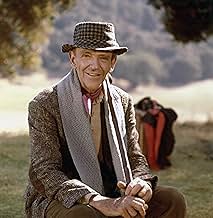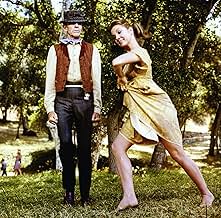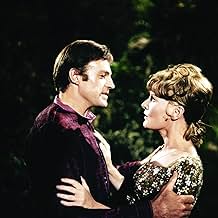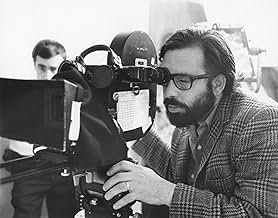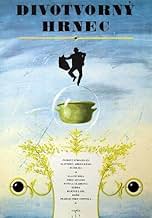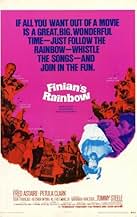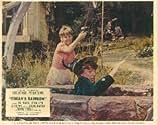Füge eine Handlung in deiner Sprache hinzuAn Irish immigrant and his daughter move into a town in the American South with a magical piece of gold that will change people's lives, including a struggling farmer and African American ci... Alles lesenAn Irish immigrant and his daughter move into a town in the American South with a magical piece of gold that will change people's lives, including a struggling farmer and African American citizens threatened by a bigoted politician.An Irish immigrant and his daughter move into a town in the American South with a magical piece of gold that will change people's lives, including a struggling farmer and African American citizens threatened by a bigoted politician.
- Für 2 Oscars nominiert
- 1 Gewinn & 9 Nominierungen insgesamt
- Sharecropper 'Necessity'
- (Nicht genannt)
- Sharecropper
- (Nicht genannt)
- Sharecropper
- (Nicht genannt)
- Geologist
- (Nicht genannt)
- Sharecropper
- (Nicht genannt)
- Sharecropper
- (Nicht genannt)
- Sharecropper
- (Nicht genannt)
Empfohlene Bewertungen
Unfortunately it was assembled as a 145 minute "roadshow" musical; these were overlong spectaculars which depended less on the charm of the performers (think 1930's) than on pre-sold event marketing (unnecessary, pretentious, overscale, and distracting production values; souvenir programs; etc.). Right around the time of its release these mega-productions were leading many of the studios to financial ruin. Warner Brothers took a hit from this one; box office was bad but fortunately Coppola worked cheap and had cranked this out on the back-lot with a relatively modest budget.
Trim about 30 minutes from the film and you would have a much better production. There is a lot of stuff here that is supposed to be fun and just doesn't make it. Fortunately there are some real gems sandwiched throughout the film.
Think bi-racial "Lil Abner" (1959) with a touch of "The Wizard of Oz" (1939). The Oz connection comes from lyricist E. Y. Harburg, the guy who gave us "If I Were the King of the Forest". There are enough such silly songs to make up for toughing out the musical clunker moments. Tommy Steele absolutely shines doing this material (insert Bert Lahr here) .
Nothing wrong with the performances of Fred Astaire or Petula Clark either. And its not just his dancing and her singing, they both achieve excellent characterizations. Astaire at 70 does not look much different facially than Astaire at 30. But this time instead of a physically unlikely love interest he plays a warm old man still chasing a dream, and it's a much better fit. Clark does an excellent Debbie Reynolds and more than holds her own through the production.
Unfortunately there is little good to say about the casting of Don Francks as Petula's love interest and Hancock's older brother. Most likely Coppola felt that the film needed a relatively hip looking guy in place of a Gordon MacRae type. But Francks comes off as more of an oily hotshot; the kind of guy who would proposition your 14 year-old sister.
The plot has Finian and his daughter coming to Kentucky to bury a crock of gold he has stolen from a leprechaun back in Ireland. Finian believes that he can produce some kind of synergy by getting the gold within close range of Ft. Knox. They end up in a racially mixed Dogpatch named Rainbow Valley, where blacks and whites work side-by-side as tobacco sharecroppers. There is considerable intrigue involving the local racist political hacks, a new strain of mentholated tobacco being developed by a George Washington Carver type (nicely played by Al Freeman Jr.), back taxes on the sharecropping collective, romance, and a leprechaun who is slowly becoming human.
Barbara Hancock, a young but quite accomplished ballet dancer, is fetching as "Susan the Silent" (who dances instead of talking). Coppola adds a lot of nice lyrical moments by showcasing her dancing. It is said that Astaire resented her being cast instead of an older dancer he recommended. They are not paired in any number, a failure conspicuous by its absence.
The widescreen DVD looks great and the Coppola commentary is surprisingly interesting.
Then again, what do I know? I'm only a child.
In a way Finian's Rainbow was always a mix-and-match musical. The E.Y. Harburg-Burton Lane score blends Broadway brass with Irish jigs and occasionally gospel to surprising success. The story also places old-world folklore alongside contemporary racial issues, in what is a sometimes awkward but generally passable modern-day fairytale. Aside from anything else, the Lane melodies are of considerable beauty and the Harburg lyrics witty enough that it makes a broadly appealing and timeless package. Fans of the inventive wordplay in the numbers from Wizard of Oz, which were also penned by Harburg, will appreciate such clever twists as "Make him a better person not a worse 'un" Harburg even reuses the word "individdle", here rhyming it with fiddle, having rhymed it with riddle in Oz.
Another relic of the old days appears in the form of Fred Astaire as the titular Finian. Astaire may be lacking his cane and topper, he may be showing the signs of his age a little, and his accent may be about as authentically Irish as a gift-shop Shillelagh – but it's still the same old Fred, full of the effortless dance-steps and easygoing charm that won over audiences thirty-five years earlier. It's a real delight to see him here, partly because his endearing demeanour is so reassuringly familiar, and yet he still makes an honest attempt to deviate from his regular persona to create this crusty yet lovable old Irishman. Representing the new is a fresh-faced Tommy Steele, playing the leprechaun Og. A certain proportion of Steele's performance, say 10%, is pure brilliance. Unfortunately the remaining 90% is pure annoyance, as Steele grins and capers his way maddeningly through some disappointingly flat renditions of the Harburg-Lane numbers. Still, he does appear to have struck some kind of unlikely rapport with Astaire, and their scenes together are among the most brightly comical.
The director was from the young side of the fence. Francis Ford Coppola was a graduate of Roger Corman's schlock factory, and this was his first big-budget assignment. Coppola had already demonstrated himself to be a director who took a detached and distant view of things, often keeping his camera high above the action or peeping from amongst foreground foliage. Oddly enough this sets him up well for the light and abstract world of the musical, in which the broad canvas, rich detail and ensemble are more important than the intense close-up or the dramatic long take. Coppola shows real sensitivity to the music, keeping rhythms going with natural-looking background movement – check out the way the crowd shifts behind Petula Clark and Don Francks during "Look to the Rainbow". He also uses his harmonious technique to draw attention to the lyrics, for example having the camera pan up to the heavens on the line "Skies could be so bluish blue" in "Something Sort of Grandish".
The conventions of the time and the sensibilities of the young production team have certainly left their mark on Finian's Rainbow. There are many thinly-veiled references to hippy and protest culture, with the "tobacco"-growing enterprise, a business-like police force and even a sit-down, in a reasonable attempt to make this a musical equivalent of In the Heat of the Night. However the difference between the old and the new is too stark for them to fuse. Coppola's penchant for realism results in some stunning outdoor photography, but this only grates all the more with the woefully fake-looking studio "forest", the like of which would now only be seen in a kid's TV show. Most of the components are glorious, but as a whole it is occasionally like watching two separate films spliced together.
However, Finian's Rainbow is at least self-aware enough to realise that it has the opportunity to be a respectful homage to the classic musical, and never descends into a roughshod "update". The most profound and emotionally stirring aspect of the picture is that Astaire evidently knew it would be his last appearance as a dancer. Coppola surely knew it too, and the tender staging of Astaire's final scene is among the most poignant moments of self-reference in movie history.
The plot is deliberately ridiculous, and finds Irishman Finian McLonergan (Fred Astaire) and his long suffering daughter Sharon (Petula Clark) in Tennessee, where Finian plans to bury a crock of gold stolen from a leprechaun (Tommy Steele) on the theory that the land around Fort Knox will make the gold grow. But things take an unexpected turn when they arrive in Rainbow Valley, where they encounter a commune of black and white tobacco sharecroppers doing battle with a viciously bigoted Senator (Keenan Wynn.) And when daughter Sharon is outraged by the Senator's racism and happens to be standing by the hidden crock of gold--she accidentally "wishes" the Senator black! Unlike the 1947 stage show, the big screen version of FINIAN'S RAINBOW tanked at the box office, and it is little wonder: both producers and then-novice director Francis Ford Coppola made a host of very basic mistakes with the material, the first of which was not keeping the film within its original 1940s context; they instead give it a 'contemporary' tone that not only undercuts the fanciful storyline but makes many of the story's elements seem heavy-handed. In the process they manage to blunt the edge of the original in a very significant sort of way. There are also a number of cinematic problems with the movie, which feels awkwardly filmed and still more awkwardly edited, and the film visibly shifts between outdoor set-ups and studio soundstage sets in a very uncomfortable sort of way.
All of that said, there is still a great deal to enjoy in FINIAN'S RAINBOW--the aforementioned score for one and the truly memorable performances for another. Astaire is timeless, Tommy Steele almost walks away with the show, Keegan Wynn (in spite of some rather ill-advised make-up) gives a memorable performance as the bigoted Senator, and Al Freeman Jr. is absolutely hilarious in the sequence where he applies for the job of butler in the Senator's home--I laugh just thinking about it! But the real revelation here is Petula Clark. Best known as a pop singer, Clark is perfection as Sharon McLonergan; it is a tremendous pity that she was never again so well-cast on screen. And together they manage to gloss over most of the film's weaknesses; if you're a musical fan, you're likely to enjoy it.
Gary F. Taylor, aka GFT, Amazon Reviewer
The movie's flaws lie not so much in the updating to 1968 as in the eyes of today's viewers. We have sadly grown used to movies that are paced much faster than this one. As a result, those too young to have grown up with older movies will consider FINIAN'S RAINBOW very slow and overlong.
Fundamentally, though, FINIAN'S RAINBOW suffers the same afflictions all stage musicals suffer when transcribed to the big screen: Loss of intimacy. Hollywood always makes stage musicals 'way too big. They think musicals have to take place all over the continent. Oddly, a single stage worked for the play, and still does. (Possibly the rare exception to this is THE MUSIC MAN which was "opened up" only enough, not too much.) All movies are of their times, especially movie musicals. Accept that and enjoy FINIAN'S RAINBOW's wonderful score and excellent performances by the entire cast.
Wusstest du schon
- WissenswertesMany, including Fred Astaire, blamed director Francis Ford Coppola for cutting off Astaire's feet during filming of his dancing scenes, but it was Warner Bros. who decided, after the filming had been completed in 35mm, to convert the film to the wider 70mm and promote it as a "reserved-ticket roadshow attraction." This was achieved by cropping off the tops and bottoms of the film frame, including some shots of Astaire's footwork.
- PatzerIn the song "Old Devil Moon" as Woody and Sharon dance through the stream, Woody has bare feet and his hands are in Sharon's. In the next shot, he has his shoes on, and it even looks as if his trousers are dry.
- Zitate
Finian McLonergan: What do you think makes America different from Ireland?
Sharon McLonergan: It has more Irishmen?
- Alternative VersionenFilmed in 35mm, Warners decided afterwards to promote it as a "reserved-ticket roadshow attraction" and converted it to 70mm, creating a wider-screen aspect ratio by cropping away the tops and bottoms of the images, and cropping away Fred Astaire's feet during some of his dance scenes. Restored versions show the original aspect ratio.
- VerbindungenEdited into The Kid Stays in the Picture (2002)
- SoundtracksLook To The Rainbow / How Are Things In Glocca Morra?
(1946) (uncredited)
(Main Title)
Played during the opening credits
Lyrics by E.Y. Harburg
Music by Burton Lane
Sung by Petula Clark ("Rainbow") and played by the Warner Bros.
Orchestra ("Glocca Morra") conducted by Ray Heindorf
Top-Auswahl
- How long is Finian's Rainbow?Powered by Alexa
Details
Box Office
- Budget
- 3.500.000 $ (geschätzt)
- Laufzeit2 Stunden 21 Minuten
- Seitenverhältnis
- 2.39 : 1


